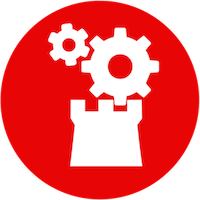Why are we here?
It’s been clear to us for a number of years that many organisations are moving their email off IBM (‘Lotus’) Notes and Domino. Typically they’ll head for either Microsoft Office 365, or Google.
What they are usually then left with is a collection of applications (‘databases’) that were built for the Notes and Domino platform. Some may be Notes client applications, some may be accessed using a browser. Some may be developed internally, and some may be off-the-shelf purchases. What they all require, though, is the retention of the IBM software and servers. And that’s the issue: you thought you were replacing one piece of software with another, but in the end you still need to retain the ‘old’ Notes/Domino servers; and the space they take up in the machine room; and the overhead of backing them up; and the expertise and staffing to maintain and administer them; and let’s not forget the cost of the software licences(!)
So one of the reasons we created LDC Via was to help solve that problem. If you are in that situation, then LDC Via can give you:
- a fully managed cloud platform
- a robust backup regime
- a highly-scalable and very fast cloud-based database engine
- a Notes-like security model (‘readers’ and ‘authors’ fields)
- point-and-click tools to build a simple UI onto your data
- out-of-the-box templates for standard applications (Discussion, TeamRoom, Journal and Mail Archive)
- the tools to migrate your data as-is: no complex cleaning or remodelling is needed to shoehorn it into a ‘relational’ structure
- comprehensive “APIs” to allow your developers to create new (or re-create existing) fully-featured applications
What we don’t promise is a “magic bullet” solution. There will be some work involved in re-creating your business applications. Possibly quite a lot of work. But there’s a massive ‘plus’ here: using the LDC Via APIs you can do that using any application development framework you choose. So your collaboration applications can now live in the same software development world as your other applications, and no longer be tied to IBM’s “Domino Designer” tool. And your end results are streamlined fit-for-purpose applications your organisation can carry on using for many years.
It’s all really quite liberating.
